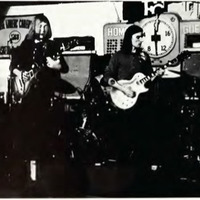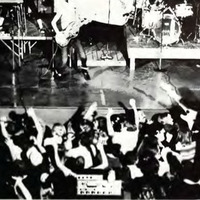Campus Culture
In examining the history of musical groups that have visited the Washington and Lee campus, one also investigates the social history of the student body. Student opinion pieces in the school newspaper, the Ring-tum Phi, help show that the relationship between the student body and their musical culture was a two-way street. On the one hand, students negotiated contracts with certain types of musicians based on the character of the campus at the time. On the other hand, students designed the concert environments around the type of band – jazz concerts were an organized, indoor affair; rock concerts an outdoor one. Evaluating the musical history in terms of change over time and change across genres allows for a better understanding of the students who have filtered through this campus and exemplifies the university’s loosening grip on stuffy traditional values. Though musicians visited W&L prior to 1950, this project has limited its scope to the past 70 years.
A careful examination of the musical guests that have visited W&L requires that the history not be separated from the social context of the time. In sum, issues of race, gender, and appropriation are very much part of this story. Appreciating Southern roots often meant appropriating black rhythm and blues, a tradition that started with enslaved people. It is interesting to note that W&L hosted both black musicians and white musicians who played black music, even before the first black students graduated in 1972.
Jazz at 1950 Fancy Dress
From the 1950s through the 1970s, Washington and Lee students were enamored with jazz, especially swing. For the Fancy Dress Weekend of 1950, W&L hired two big-name jazz bands: Tex Beneke leading the band of the late Glenn Miller and Glen Gray leading the Casa Loma orchestra. Both were big-band style jazz groups, and both leads were saxophonists. The Ring-tum Phi article (above, left) that announces the double-header emphasizes that having two major musical visitors is a first for Fancy Dress. The article also portrays one of the first examples of setting needing to match the music. It describes the return of student-decorating to the ball for the first time in many years, and for the first time, the appearance of “three dimension, perspective exhibits … to incorporate a stage set atmosphere in the gym.” The students felt the need to step up the decoration to honor such distinguished guests, while also trying to save money. Since this double-concert in 1950, Washington and Lee put significant time, effort, and money into bringing popular groups and big names onto campus.
Blues and folk music, alongside the ever-present jazz, exploded on the W&L campus in the 1960s. In 1963, Odetta, named “The Queen of American Folk Music” by none other than Martin Luther King Jr., visited as the opening act of the Spring Dance Set (Corliss). She was also an incredible civil rights activist, which not all W&L students and faculty supported. When she gave a concert, she was followed by the main act of The Journeymen, an all-white American folk trio who never achieved the same sort of foundational sound. Yet, the Ring-tum Phi article that covers her appearance (left) focuses much more on her than on the main act. Weirdly, the article does not mention the intense activist work that she had already been engaged in for years; in fact, the same year she visited campus, Odetta also attended the March on Washington and sang to inspire the crowds (Yeager). W&L found itself in a strange place, enjoying the work of black artists and deeming it appropriate for student entertainment before being a fully integrated campus.
The wave of jazz concerts in the 1960s follows a similar trend. Duke Ellington and his Orchestra played one of the main dance sets at Fancy Dress in 1961. Despite being a foundational American jazz artist with roots in Harlem’s Cotton Club and well established by the time of the concert, Ellington was still a third choice for Washington and Lee students (Nichols 430). As stated in an article announcing the choice (right), the student body preferred both Ray Charles and Louis Armstrong, but when neither were available, they made the most of Duke Ellington, proclaiming the silver lining that he was cheaper and would allow more money to be spent on the second night of Fancy Dress Weekend. This example carries an air of stereotype, implying that in the minds of W&L students, each black jazz artist could be switched for another, and in the end, the cheapest was best.
First Rock 'N' Roll Concert
Jazz was not the only popular genre during this time period, however; in 1960, Washington and Lee hosted their first rock ‘n’ roll concert, played by Jimmy Reed. Above you can see both the excitement around introducing a new genre to campus and the apprehension of certain student leaders at this new direction. The article covering Jimmy Reed (above, left) makes sure to also emphasize that "conventional dress will not be required" at the outdoor concert, but that "it will not admit any couple not dressed in a respectable manner." Another article from the same edition of the newspaper (above, right) reveals the concerns of the Dance Board in charge of the concert and the school administration. Drinking seems to be a top concern. The student responsible for the piece considers the Jimmy Reed concert a "test case" in W&L's ability to change, with the assumption that the success of this concert will mean better and better musicians. The pair of articles, then, shows how students thought about how music changed their campus, and how changes in their campus reflected further changes in their collective musical culture.
Concerts in the '70s
After another decade of adding variety, W&L in the '70s expanded their musical horizons into more and more genres. Students continued to enjoy rock especially of the more soulful brand. The Allman Brothers Band (above left) visited in 1971, another band who owed much of their style to black artists and, an exception to the appropriation rule, gave credit where credit was due (Nicholls 369). The same year, Sha-Na-Na (above) gave a concert. The rock 'n' roll doo-wop group would be responsible for the Grease soundtrack several years later. In 1973, W&L expanded into bluegrass when Earl Scruggs (above right) came to play during Homecoming. Though they held on to their interest in the roots of folk and blues, the student body obviously was open to change.
Rock continued to be popular on campus through the ‘80s, while Mowtown, which owes its existence to black musicians, started to gain traction. Two significant bands made an appearance in the middle of the decade in 1985: The Four Tops and R.E.M. The Four Tops (above left), a quartet who helped develop the Motown sound, performed for Fancy Dress in 1985. Just five years later, they would be inducted into the Rock and Roll Hall of Fame. When R.E.M. gave a concert near Christmas, the Student Activities Pavilion -- which had only existed for two years -- sold out of tickets for the first time. The alternative rock band would follow The Four Tops into the Rock and Roll Hall of Fame many years later in 2007.
The '90s saw a more diverse mix of rock, country, and -- for the first time -- hip hop. The school also kept with its pattern of inviting top performing artists. Artists such as Coolio, Skee-lo, and A Tribe Called Quest all held performances at Washington and Lee. Coolio had also just released his major hit song “Gangsta’s Paradise” a year prior to coming to campus in 1996 while A Tribe Called Quest had gone platinum on a number of albums prior to their performance in 1997. The Coolio concert in particular caused some controversy. A piece in the student newspaper (right) discusses the mixed reaction of students, some filled with excitement and others wondering at the appropriateness of Coolio's music and lyrics for this audience. In some ways, W&L had come a long way from the way they handled the matter of race in the '50s and '60s, but the racial dynamics obviously continued to be on the minds of students.
The '90s also included concerts from some of the top rock and country artists at the time. Artists such as David Allen Coe, The Dave Matthews Band, Widespread Panic, and Spin Doctors were all able to make appearances. In the 2000s, several more artists with far-reaching popularity visited campus, including hip hop group Run DMC, country artist Robert Earl Keene, and rapper Busta Rhymes.
By tracing this long history of visiting artists, one can see a shift in musical interests and venues. Students also started to talk more about race and the nuances of inviting certain groups to campus for the entertainment of a predominantly white student body, though it is a conversation still going on today. This evolution from jazz-obsessed to dabbling in all things popular has brought about more relaxed concerts and shown W&L's capacity for change.






